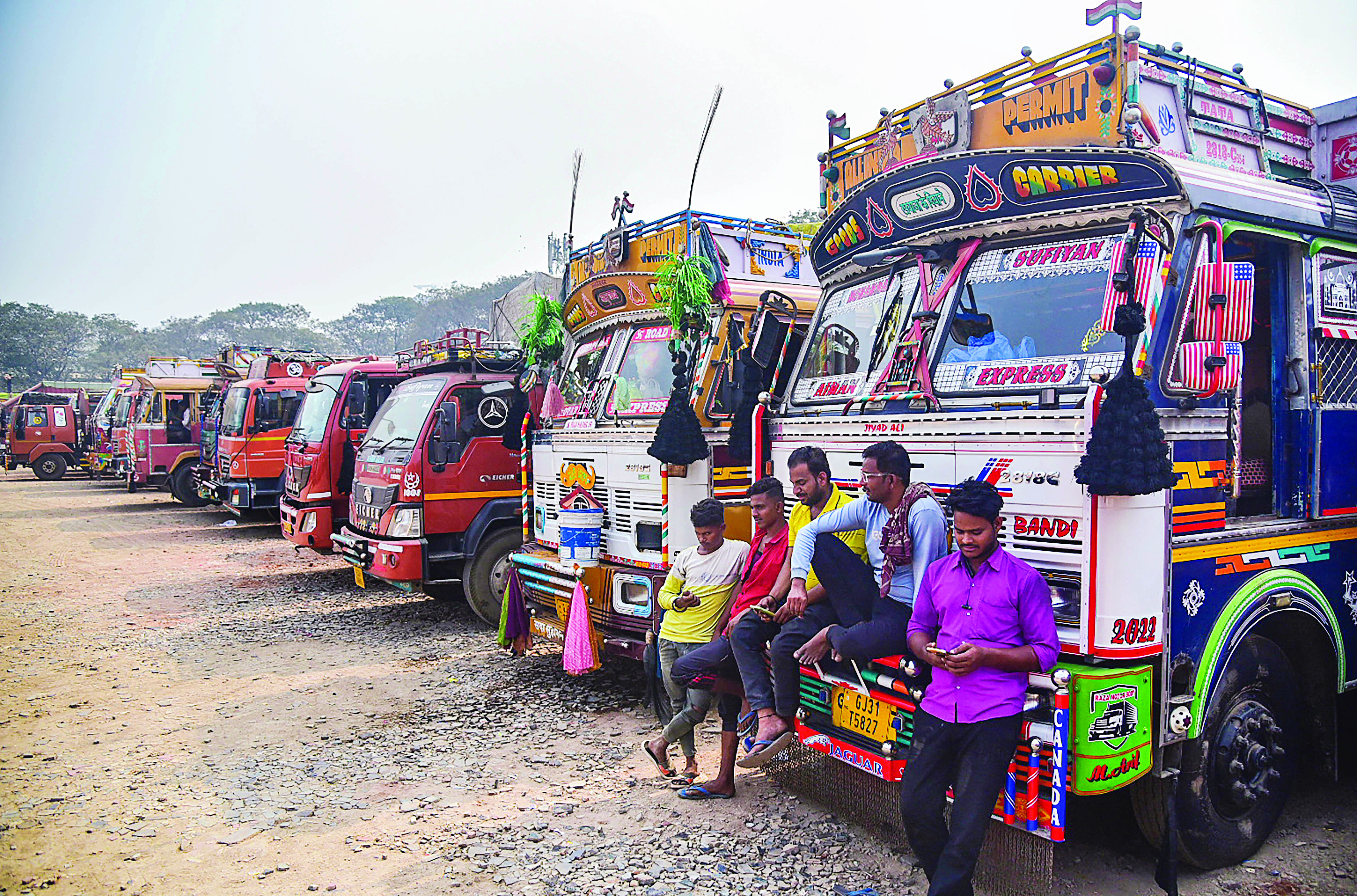Truckers end strike as govt says law on hit-and-run only after talks

New Delhi: The truck drivers’ associations called off their nationwide protest after the government assured consultations with stakeholders before implementing a controversial new law on hit-and-run cases. Following lengthy talks with the government, the All-India Motor Transport Congress (AIMTC) called off the agitation.
Union Home Secretary Ajay Bhalla pledged on Tuesday that the decision to invoke the new provision for hit-and-run cases, which sparked protests by truckers, will be taken only after due consultation with the AIMTC. He appealed to the association and all drivers involved in the protest to resume work.
“While these new laws haven’t taken effect yet, we want to emphasize that invoking Section 106(2) of the Bharatiya Nyay Sanhita will only happen after consulting the AIMTC,” Bhalla declared after a meeting with an AIMTC delegation. He acknowledged the concerns expressed by truckers regarding the potential 10-year imprisonment and Rs 7 lakh fine stipulated in the law and ensured a detailed discussion had been held with the association representatives.
Referring to the apprehensions, a senior government functionary said a driver who accidentally hits a person and subsequently informs the police or takes the victim to the nearest hospital will not be prosecuted under the stringent provision of the recently enacted Bharatiya Nyaya Sanhita.
Meanwhile, a spokesperson for the Home Ministry reiterated the government’s commitment to considering all concerns raised by the protesting drivers with an “open mind” and urged them to return to work.
For context, the new BNS provision states that anyone causing death through rash and negligent driving, without promptly reporting it to authorities, may face imprisonment for up to ten years and a Rs 7 lakh fine. This sparked outrage among truckers due to the significantly increased penalties compared to the two-year sentence under the earlier Indian Penal Code.
The MHA spokesperson termed the meeting with the AIMTC a “success.” Although Bhalla confirmed that the new law and its provision are not yet in effect, AIMTC representatives still expressed reservations. Speaking to reporters after the meeting, AIMTC Chairman-organising committee Bal Mankit Singh asserted, “This law hasn’t been implemented yet, and we will not allow it to be implemented.” He also appealed to truckers to call off the protest.
Despite the differing stances, both sides acknowledged the possibility of further discussion.
Earier in the day, protests by truck drivers caused disruptions in fuel supply and sparked panic buying in several parts of the country. The strike threatened to impact the flow of essential goods.
In Maharashtra, Nashik drivers ended their strike, but Rajasthan witnessed violence as a mob burned a police vehicle and injured officers.
Meanwhile, the Opposition Congress backed the truckers’ demands, raising concerns about potential misuse of the law and organised corruption. Party chief Mallikarjun Kharge criticised the government for penalising drivers while neglecting infrastructure investment.
Fuel shortages emerged amid panic buying. Himachal Pradesh pumps ran dry, forcing rationing. Chandigarh followed suit, limiting fuel for two-wheelers and cars. Similar queues and rationing plagued Punjab, Jammu and Kashmir, and Haryana, where private bus and auto-rickshaw operators joined the protest.
Maharashtra saw disruptions across Mumbai, Nagpur, and other cities. In Madhya Pradesh, five lakh vehicles remained idle, leaving passengers stranded.
Industry officials reported over 2,000 fuel pumps running dry, mainly in western and northern India, due to panic buying.
While state-owned oil firms had prepared for the strike, heavy demand quickly depleted stocks in some pumps.
Himachal Pradesh saw most petrol pumps closed, with rationing measures implemented in several districts.
The Himachal Roadways Transport Corporation reduced bus services on low-occupancy routes due to the strike.
Chief Minister Sukhwinder Singh Sukhu called for the Union government to address the truckers’ concerns, expressing worry about the situation escalating if the strike persists.
In Jammu and Kashmir, 90 per cent of petrol pumps ran dry, impacting 1,500 tankers transporting fuel to the region. Long queues formed at the remaining operational pumps, prompting traffic snarls.
However, officials assured adequate reserves of diesel, petrol, and LPG, urging residents not to panic.
Punjab also witnessed long queues at petrol pumps and cooking gas agencies, with traders predicting potential disruption in fruit, vegetable, and milk supplies if the strike continues.
Southern India remained largely unaffected, with only a few pumps in Hyderabad experiencing temporary shortages.
However, industry officials warned of potential vegetable, fruit, and milk disruptions if the strike extends or expands nationwide. with agency inputs



